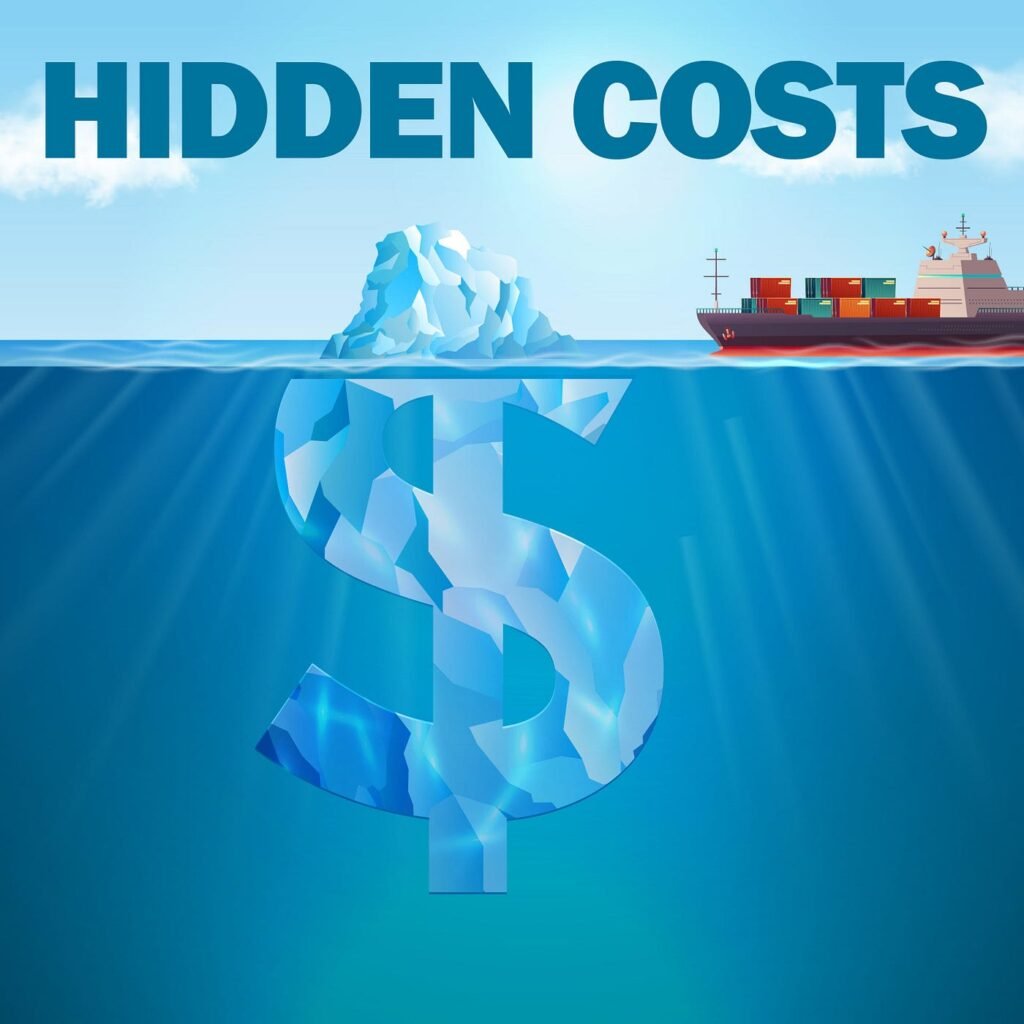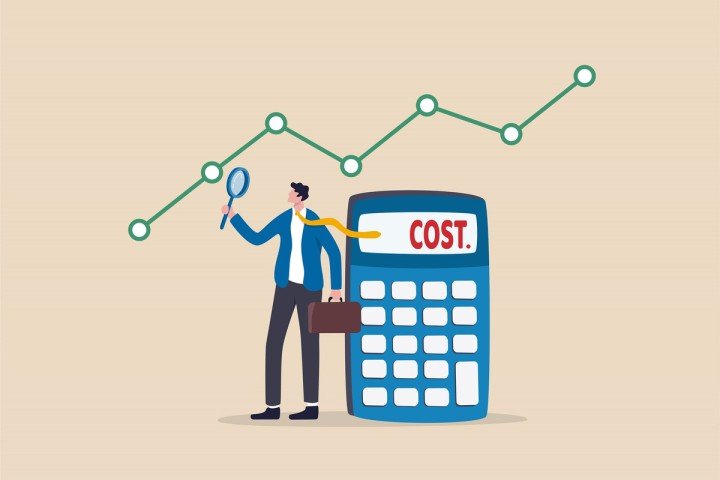
1. Introduction
An Original Equipment Manufacturer (OEM) is a company that produces goods based on another company’s design and specifications, with these products typically sold under the buying company’s brand name. In the bag industry, OEMs play a pivotal role by allowing brands, especially those without manufacturing facilities, to bring their unique designs to life. Brands provide their specific designs, materials, and other details to the OEM, which then manufactures the bags to these exact specifications. This collaboration ensures that even though the bags are produced by the OEM, they reflect the branding, quality, and unique design elements of the commissioning brand.

2. The Obvious vs. Hidden Costs
When global buyers venture into the realm of manufacturing, there are certain costs that immediately come to mind, often categorized as the “obvious” costs. These include:
- Production Costs: The direct expenses associated with creating the product. This covers machinery usage, energy consumption, and other process-related expenses.
- Raw Materials: The tangible components that make up the product. For bags, this could range from leather, nylon, and zippers to smaller elements like threads or embellishments.
- Labor: Wages paid to the workers who craft the product, which can vary significantly depending on the region or country of manufacturing.
- Shipping: Fees associated with transporting the finished product from the manufacturing facility to its final destination, including freight, insurance, and customs duties.
However, while these costs are anticipated, there’s another category that can catch buyers off-guard: the “hidden” or less obvious costs. These might not be immediately evident in initial quotes or discussions but can significantly impact the overall budget. Examples include quality control inspections, intellectual property protection, or fees related to adjusting design after production begins. These costs, if not accounted for, can surprise and challenge global buyers as they navigate the complexities of the manufacturing partnership.

3. Quality Control and Inspection Fees
Ensuring that products meet specified standards and are consistent in quality is a cornerstone of successful manufacturing. Consistent quality checks are paramount for several reasons:
- Consumer Trust: Reliable product quality fosters trust among consumers, encouraging repeat purchases and positive word-of-mouth recommendations.
- Brand Reputation: Consistent quality underscores a brand’s commitment to excellence, safeguarding its reputation in the market.
- Regulatory Compliance: Some products must meet specific regulatory standards, making consistent quality checks not just good practice but a legal requirement.
While the importance of quality control is evident, it brings with it certain costs that brands need to be aware of:
- Third-Party Inspection Services: Often, companies opt for external agencies to conduct impartial quality checks. These agencies ensure that the manufacturing process and the final product align with the agreed-upon standards. Engaging these services incurs fees which can vary based on the depth of the inspection and the agency’s reputation.
- In-House Quality Control Teams: Some businesses prefer to have an in-house team dedicated to quality control. While this ensures closer oversight and often quicker response times to issues, it also means additional costs in terms of salaries, training, and resources.
In essence, while quality control and inspections are investments in the product’s integrity and the brand’s reputation, they do add layers of costs that businesses should anticipate and budget for.

4. Prototyping and Sample Production
Venturing into the production process, one of the critical phases brands often encounter is the development of prototypes or samples. This step is vital for several reasons, but it also comes with associated costs.
- Why Manufacturers Charge for Samples:
- Resource Allocation: Even for samples, manufacturers must allocate raw materials, machinery, and labor. These resources could otherwise be used for bulk production, so there’s a tangible cost involved.
- Expertise and Time: Crafting a prototype often requires specialized attention, as it sets the standard for subsequent mass production. The meticulous work and time invested in getting the sample right are reflected in the associated charges.
- Risk Mitigation: Charging for samples ensures that manufacturers are compensated for their efforts, even if the brand decides not to proceed with a larger order.
- The Iterative Process of Design Adjustments and Its Potential Costs:
- Revision Costs: After reviewing the initial prototype, brands often request modifications. Each revision might involve new materials or additional labor hours, incurring extra costs.
- Time Delays: Multiple iterations can extend the time before mass production begins, potentially leading to opportunity costs or market-entry delays.
- Communication Overheads: Constant back-and-forth discussions between brands and manufacturers during the revision process might necessitate more meetings, calls, or even on-site visits, all of which can add up in terms of costs and resources.

5. Intellectual Property (IP) Protection
In today’s competitive marketplace, safeguarding unique designs, brand logos, and other distinctive elements is not just wise but essential. This is where Intellectual Property (IP) protection comes into play, especially for brands venturing into the bag industry.
- The Significance of Protecting Your Bag Designs:
- Brand Identity: Unique bag designs form a significant part of a brand’s identity, setting it apart from competitors. Protecting these ensures that the brand remains distinctive in consumers’ minds.
- Monetary Value: Original designs, if copied or replicated without permission, can lead to lost sales and dilution of the brand’s value. IP protection helps guard against such unauthorized use.
- Legal Leverage: In case of disputes, having registered IP rights provides legal leverage, allowing brands to take action against counterfeiters or infringers.
- Costs Related to Patents, Copyrights, and Trademarks:
- Filing Fees: Registering for a patent, copyright, or trademark typically involves application fees. These can vary depending on the region or country and the complexity of the application.
- Attorney Fees: The process can be intricate, and many brands opt to hire specialized IP attorneys to ensure correct filing and enhance the chances of approval. This legal expertise comes at a price.
- Maintenance Costs: Intellectual property rights, especially patents and trademarks, often come with periodic renewal fees. Additionally, there may be costs associated with defending the IP against infringements or opposing potential infringing applications.
- International Extensions: If a brand operates or plans to operate in multiple countries, it might need to secure IP rights in each of those jurisdictions, leading to added costs.

6. Currency Exchange Rates and Bank Fees
Navigating the international landscape of manufacturing and trade often involves grappling with the financial intricacies of different currencies and the banking systems that facilitate cross-border transactions.
- Fluctuating Exchange Rates and Its Impact on Costs:
- Volatile Pricing: Exchange rates are subject to constant fluctuations due to various economic, geopolitical, and market factors. For global buyers, a sudden change in rates can significantly affect the cost of goods, potentially leading to increased expenses or unexpected savings.
- Budgeting Challenges: Predicting exact costs becomes challenging when exchange rates are volatile. This can impact budget forecasts and affect profit margins, especially if payments are spread over extended periods.
- Risk Management: To mitigate risks, businesses might resort to hedging strategies or forward contracts, which can add an additional layer of complexity and potential costs to transactions.
- Hidden Bank Fees During International Transactions:
- Transaction Fees: While some bank fees are explicitly mentioned, others might be bundled or hidden in the exchange rate provided. This can include charges for wire transfers, receiving funds, or intermediary bank fees.
- Service Charges: Some banks charge fees for account maintenance, especially for business accounts engaged in international transactions. These can accumulate over time, adding to the overall cost.
- Conversion Costs: If a transaction involves multiple currencies, there might be fees for each conversion step. This can significantly impact the overall cost, especially if the conversions are not done at favorable rates.
- Third-Party Fees: In some cases, intermediary banks or financial institutions might be involved in facilitating the transaction, and they might levy their own set of charges.
For global buyers, understanding the nuances of currency exchange rates and being vigilant about bank fees is crucial. It not only ensures better financial planning but also prevents unforeseen expenses that can eat into the profitability of ventures.

7. Overhead Costs in Storage and Warehousing
The logistical aspect of business, especially when it pertains to physical goods like bags, demands significant attention to storage and warehousing. These facilities, while essential, also come with their own set of overhead costs that can substantially influence a business’s bottom line.
- The Expenses Related to Storing Excess Inventory:
- Rent or Lease Costs: Warehousing spaces, whether rented or owned, come with monthly or annual expenses. Holding excess inventory means larger storage spaces are needed, which directly translates to higher rent or mortgage payments.
- Utilities and Maintenance: Lighting, climate control (especially important for sensitive materials), and general upkeep of the facility add to the monthly costs.
- Security: Protecting inventory from theft, damage, or environmental factors requires security measures, including surveillance systems, alarms, and possibly on-site security personnel, all of which add to overheads.
- Insurance: Insuring the stored goods against potential losses is a wise move, but it’s also an added expense, especially if inventory levels are high.
- Importance of Inventory Management and Forecasting to Avoid Unnecessary Storage Fees:
- Optimized Storage: Effective inventory management ensures that the storage space is utilized efficiently, without wastage or overstocking. This can lead to potential savings, as businesses might require smaller warehouses or fewer storage units.
- Reduced Holding Costs: By accurately forecasting demand and adjusting supply accordingly, businesses can avoid holding onto goods for extended periods, thereby reducing associated costs like insurance or depreciation.
- Quick Turnaround: Efficient inventory management can lead to quicker stock turnovers. This means products are sold and shipped out faster, reducing the time they spend in storage and subsequently the costs.
- Mitigated Risks: Accurate forecasting reduces the risks of overproduction or underproduction. This balance ensures that businesses aren’t left with unsold, devaluing stock or missed sales opportunities due to stockouts.
8. Compliance and Regulatory Fees
In a world that’s more interconnected than ever, businesses seeking a global presence must be attuned to the diverse regulatory landscapes that define each market. Especially in the product manufacturing sector, including bags, adherence to international standards and certifications is paramount. However, ensuring compliance doesn’t come without its set of associated costs.
- Navigating Through International Regulations, Standards, and Certifications:
- Research and Knowledge Acquisition: For a brand to be market-ready internationally, it’s vital to understand and adhere to the standards and regulations specific to each country or region. This may involve hiring experts or consulting with legal teams that specialize in international trade laws.
- Certification Processes: Many markets require products, especially consumer goods, to undergo specific certification processes before they can be sold. Acquiring these certifications often means paying fees to regulatory bodies and undergoing potentially costly testing processes.
- Adjustments and Modifications: Sometimes, products may need to be adjusted or modified to meet particular market standards. This could mean changing materials, manufacturing processes, or even design elements – all of which can add to production costs.
- Costs Related to Ensuring Products Meet Specific Market Standards:
- Testing and Quality Control: Beyond in-house quality checks, some markets require third-party testing to verify that products meet their standards. These tests, be they for durability, safety, or material composition, come at a price.
- Labeling and Packaging: Different markets may have varied requirements for how products should be labeled or packaged, both for consumer information and environmental considerations. Adhering to these standards might mean redesigning packaging or labels, leading to additional expenses.
- Licensing and Permit Fees: Certain markets might require brands to acquire licenses or permits before selling their products. The application process for these permissions can be both time-consuming and expensive.
- Penalties and Fines: Non-compliance can lead to hefty fines or even bans on selling in particular markets. While this is a cost businesses hope they never have to face, it’s essential to be aware of potential penalties and the financial impact they can have.

9. Costs of Modifications and Design Changes
In the journey from a product idea to its tangible realization, alterations are almost inevitable. These modifications, particularly after an initial agreement has been solidified, can significantly influence the overall cost structure of a project. For businesses, especially those partnering with OEMs, understanding this dynamic is critical.
- Adjustments Post the Initial Agreement Can Lead to Added Costs:
- Material Alterations: If design changes necessitate different materials than initially planned, costs can change. Some materials might be pricier, or even if they are in the same price range, there could be wastage from the initially procured materials.
- Labor and Time: Changes in design might require more complex craftsmanship or even retraining of the labor force. This increased labor effort and extended production times can add to costs.
- Machinery and Equipment: Specific design features might require specialized equipment. If changes are made after the initial agreement, and new machinery is needed, it could result in additional expenses or rental fees.
- Prototyping and Testing: Every significant design change ideally should be prototyped and tested again. This iterative process, while essential for maintaining quality, also leads to repeated costs.
- The Importance of Clear Initial Specifications to Avoid Expensive Changes Later:
- Detailed Briefing: A thorough and detailed initial briefing can substantially reduce the need for changes later. It ensures that the manufacturer fully grasps the brand’s vision from the outset.
- Collaborative Approach: Encouraging open communication channels between designers and manufacturers from the early stages can preempt potential issues, leading to a smoother production process with fewer unexpected alterations.
- Feedback Loops: Regular check-ins and approvals at various stages can ensure that any required changes are addressed earlier in the process when they are likely to be less costly.
- Future-proofing Designs: While it’s impossible to anticipate every future trend or need, designing with some degree of flexibility can reduce the need for substantial changes down the line.
10. Conclusion
It’s imperative for global buyers to exercise due diligence and conduct thorough research before entering any partnership. This not only involves understanding the clear-cut costs, such as production and shipping but also delving into potential hidden charges, from currency conversion fees to intellectual property protection. Being equipped with comprehensive knowledge ensures that there are fewer surprises down the line, allowing for more accurate budgeting and financial planning.
Tips for Global Buyers:
- Regular Communication: Maintaining open channels of communication with manufacturers can preempt many potential issues. It ensures that any deviations or challenges are addressed promptly, reducing the chances of costly modifications or delays.
- Detailed Contracts: A meticulously detailed contract can act as a safeguard against unforeseen expenses. By clearly defining the responsibilities, timelines, and costs associated with various stages of production, both parties have a clear roadmap to follow.
- Building Strong Relationships with Manufacturers: Beyond the formalities of contracts and negotiations lies the realm of human relationships. Building a rapport and mutual trust with manufacturers can go a long way. A strong relationship often means better cooperation, flexibility, and understanding, all of which can contribute to a smoother, more cost-effective production process.
At Airscape Textile, we understand the intricate dynamics of fashion, functionality, and durability when it comes to bags. Whether you’re a global buyer seeking to source high-quality bags for your business or an individual looking for the perfect accessory, we’re here to meet and exceed your expectations. Contact us now to boost your business by filling out the form on this page or just click here.

